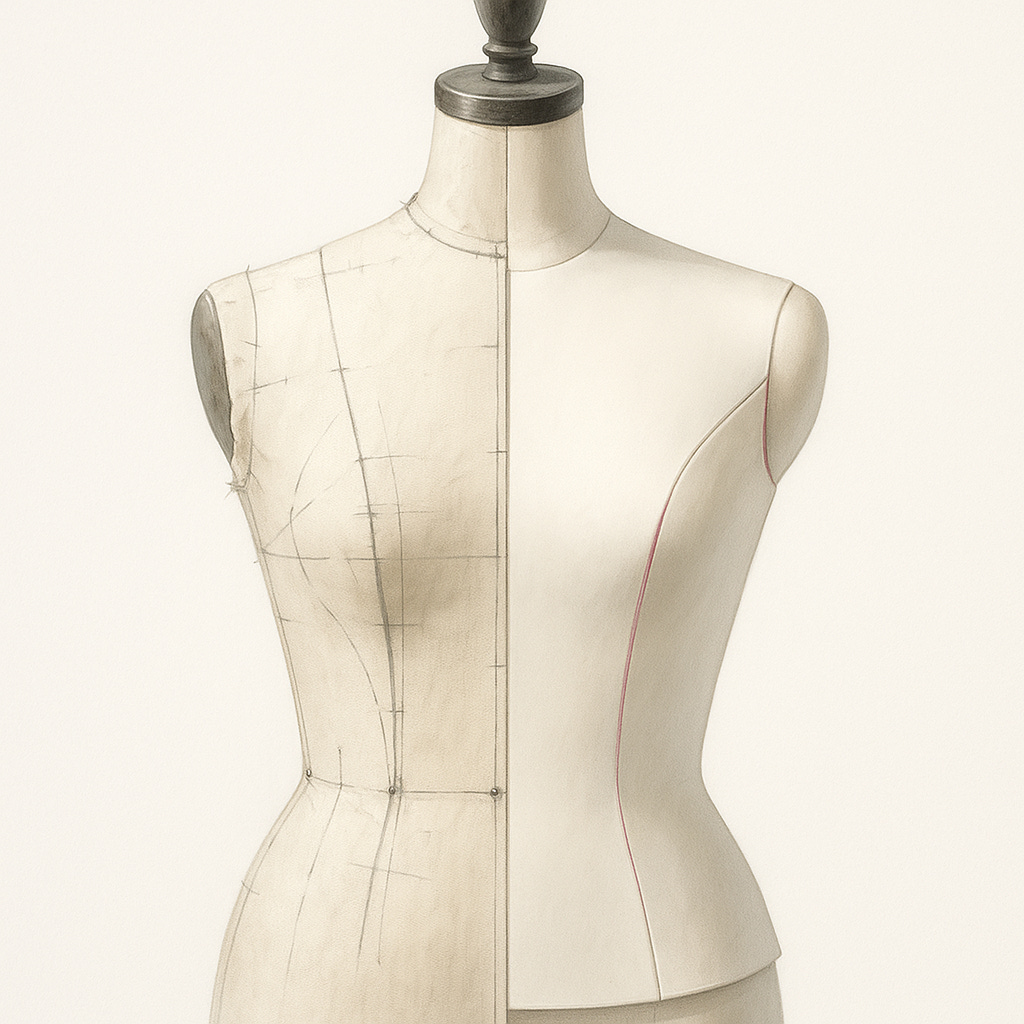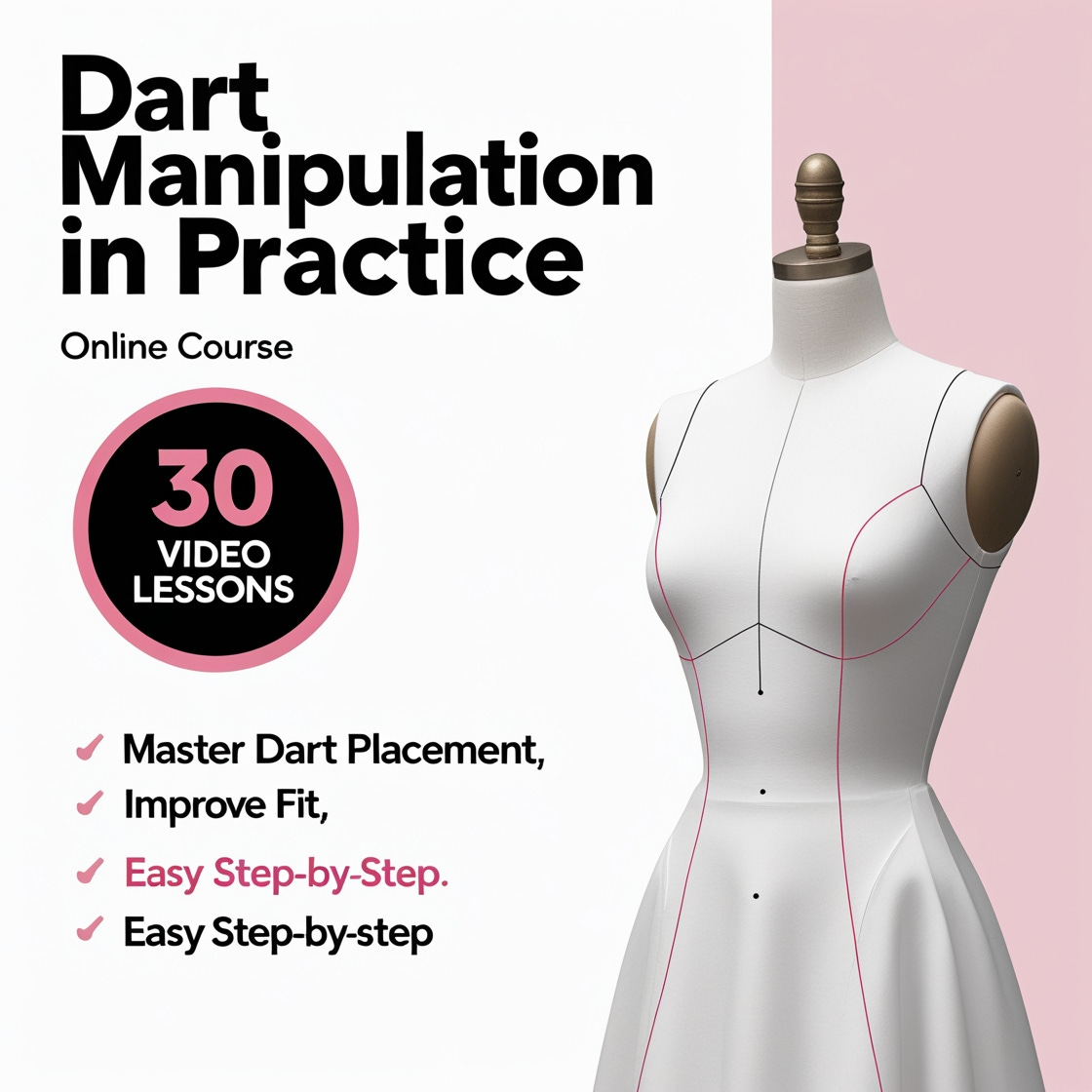Style Lines vs. Fitting Lines: Understanding the Difference
The foundation of clean lines, smooth curves, and reliable sewing results
You’ve probably noticed it without realizing what you were seeing.
Walk into any high-end boutique and run your fingers along a beautifully fitted jacket. Those elegant curved seams that flow from shoulder to waist? The way the fabric seems to hug every contour perfectly without a single pucker or gap?
Those aren’t accidents. They’re the result of masterfully manipulated fitting lines disguised as gorgeous style lines.
The Secret Language of Professional Garments
Every garment speaks two languages simultaneously:
Style lines are what everyone sees—the decorative seams, princess curves, empire waists, and architectural details that make you stop and stare in a shop window.
Fitting lines are the invisible foundation—the precisely placed darts, ease adjustments, and fabric control points that make the garment actually fit a human body.
Most home sewists only speak one language fluently. And that’s exactly why their beautiful fabrics and careful stitching still somehow look... homemade.
The Fitting Line Foundation
Here’s what I wish someone had told me years ago: every style line starts as a fitting line.
That gorgeous princess seam sweeping from armpit to waist? It began as a dart; a humble triangle of fabric that needed to be controlled to accommodate the curve from bust to waist.
Those elegant shoulder seams that lay perfectly flat? They’re the result of carefully manipulated shoulder darts that redistribute fabric exactly where your body needs it.
The difference between a $30 top and a $300 top often comes down to this: the expensive one hides its fitting lines within beautiful style lines.
Why This Changes Everything
When you understand how to speak both languages, fitting AND style, you can:
Transform basic patterns into designs that look intentionally crafted
Fix fit problems without compromising aesthetics
Create the kind of garments people assume came from an expensive designer
Stop fighting with your patterns and start designing with them
The Dart Manipulation Secret
Professional pattern makers know something most home sewists don’t: darts are design tools, not necessary evils.
Every dart can be moved, rotated, divided, or converted into:
Elegant curved seams
Stylish cut-away details
Perfectly placed ease
Architectural design elements
The same dart that eliminates gaping at your neckline can become a beautiful style detail. The dart that controls your bust curve can transform into an eye-catching princess seam.
Your “Aha” Moment Awaits
I remember the exact moment this clicked for me. I was struggling with a pattern that gaped at the armhole no matter what I tried. Following traditional advice, I’d sewn dart after dart, creating a forest of pointed triangles that looked amateurish.
Then I learned to rotate that armhole dart into the shoulder seam, and suddenly had a perfectly fitted garment with clean, professional lines. No visible darts. No gaping. Just beautiful fit that looked intentional.
That’s when I realized: the problem wasn’t my sewing skills. It was my dart manipulation skills.
Ready to Speak Both Languages?
If you’re tired of beautiful fabrics that don’t quite work, or patterns that need “just one more adjustment,” you’re ready to learn the professional approach.
My course “Dart Manipulation in Practice” teaches you to think like a professional pattern maker.
What You’ll Master:
The Foundation:
✅ How darts actually control fabric (the physics that changes everything)
✅ When to move, rotate, or convert darts for maximum impact
✅ The relationship between your body curves and fabric behavior
Essential Techniques:
✅ Step-by-step dart manipulation methods
✅ How to eliminate gaping without creating obvious dart triangles
✅ Converting ease into controlled shaping for cleaner results
Professional Dart Arsenal: You’ll practice drafting and manipulating:
• Armhole Dart • Shoulder Dart • Neckline Dart • Bust Dart • French Dart • Center Front Dart • Stylish Cut-Away Dart
Your Transformation:
Before: Fighting with patterns, accepting “good enough” fit, obviously homemade results
After: Confidently adapting any pattern, creating custom fit, professional-looking garments that make people ask “Where did you get that?”
Course Details:
💻 100% Online - Learn at your own pace
📚 Beginner-Friendly - No previous drafting experience required
🎯 Results-Focused - Immediate improvement in your garment fit and appearance
Stop Accepting “Almost Perfect”
Your time is valuable. Your beautiful fabrics deserve better than compromise fits. Every hour you spend wrestling with patterns that gap, pull, or hang awkwardly is an hour you could spend creating pieces you absolutely love wearing.
The difference between amateur and professional results isn’t more expensive tools or fancier fabrics.
It’s understanding how to make fitting lines and style lines work together.
Ready to create garments that look as good as they feel?
[Enroll in Dart Manipulation in Practice →] https://kehindeoni.gumroad.com/l/dart-manipulation-in-practice
The Foundation:
My book The Basic Pattern Set gives you the solid foundation: drafting accurate blocks to your own measurements. Once you have those blocks, Dart Manipulation in Practice is where foundation becomes freedom, showing you how to move, rotate, and convert those darts into style lines and design details.
What fit issue drives you crazy? The one that makes you avoid certain pattern styles or fabrics? Tell me in the comments, your struggle might be the perfect topic for my next tutorial.






